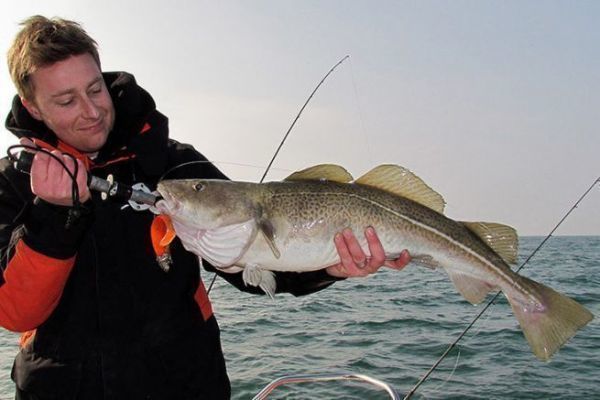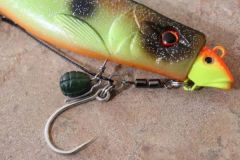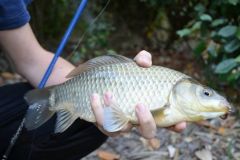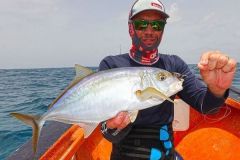Scientific name
Gadus morhua (Linné 1758)
Morphology
Our cod has an upper jaw that is further forward than the lower, and numerous small teeth on each jaw. Its long chin barb is a distinctive feature of cod compared to other gadids (pollack, saithe, whiting). It has three dorsal fins and two anal fins, with no spiny rays. A white lateral line runs along its flanks. Cod have a dark back and a light, yellowish-brown to reddish-brown belly dotted with round dark spots.
Fishing spots
The ideal water temperature for cod is between 2 and 10°C. This winter fish can be found inshore, but is more at home at depths of 20 to 60 m.
Cod fishing techniques
The chin barbel is a sensory organ used by cod to detect food on the bottom. Cod therefore primarily eat prey on the bottom: crabs, starfish (brittle stars), molluscs. Larger cod also eat fish, in which case they sometimes swim up a few meters to feed on their prey.
There's a preference for yellow, orange and red in its food. My favorite color is egg yolk. A jig or a light soft lure marked with black transverse stripes ("wasp" color) is effective on cod. On wrecks, don't fish too fine, as a large cod may entangle the line in the sharp metal sheet of the carcass. Cod can also be found in sandy areas full of shellfish and brittle stars. It was on this type of position that I was able to break 4 French records for this species. When landing and surfcasting, before the bait, a large oval phosphorescent bead and/or a coloured red or orange bead is an effective teaser to attract cod.
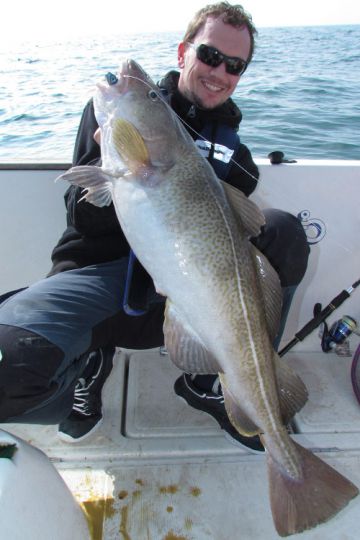
Reproduction
From 60 cm in length, cod migrate to the North Sea between February and April in waters between 4 and 6°C to lay 2.5 million eggs for every 5 kg of their weight. They can then lay up to 9 million eggs. You may eat these eggs without knowing it: they are smoked, blended and made into a pink cream called Tarama.
Size and weight
- Legal minimum size: 42 cm
- Size at sexual maturity: 60 cm
- Average size: 50 to 90 cm
- Maximum height: 1.80 m (50 kg)
- French record: 13.26 kg (Boulogne-sur-Mer, Nord-Pas-de-Calais, 07/31/1990)
- World record: 44.79 kg (Isle of Shoals, USA, 08/06/1969)
Good to know
As with bass and wolffish, its name can lead to confusion, even though cod and cod refer to the same species Gadus morhua . The name cod is used to designate dried and salted preserved fish. The name cod is used for whole fresh fish.

 /
/ 